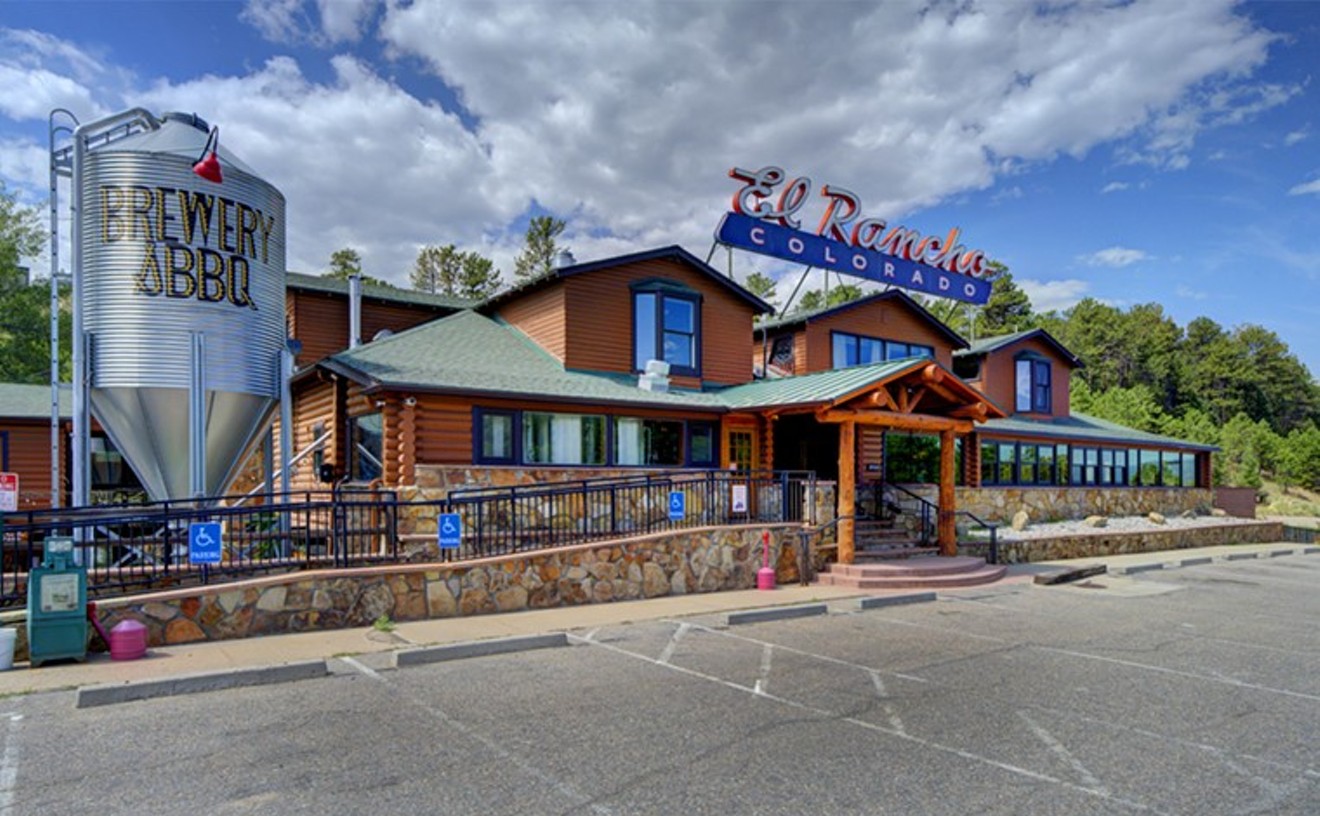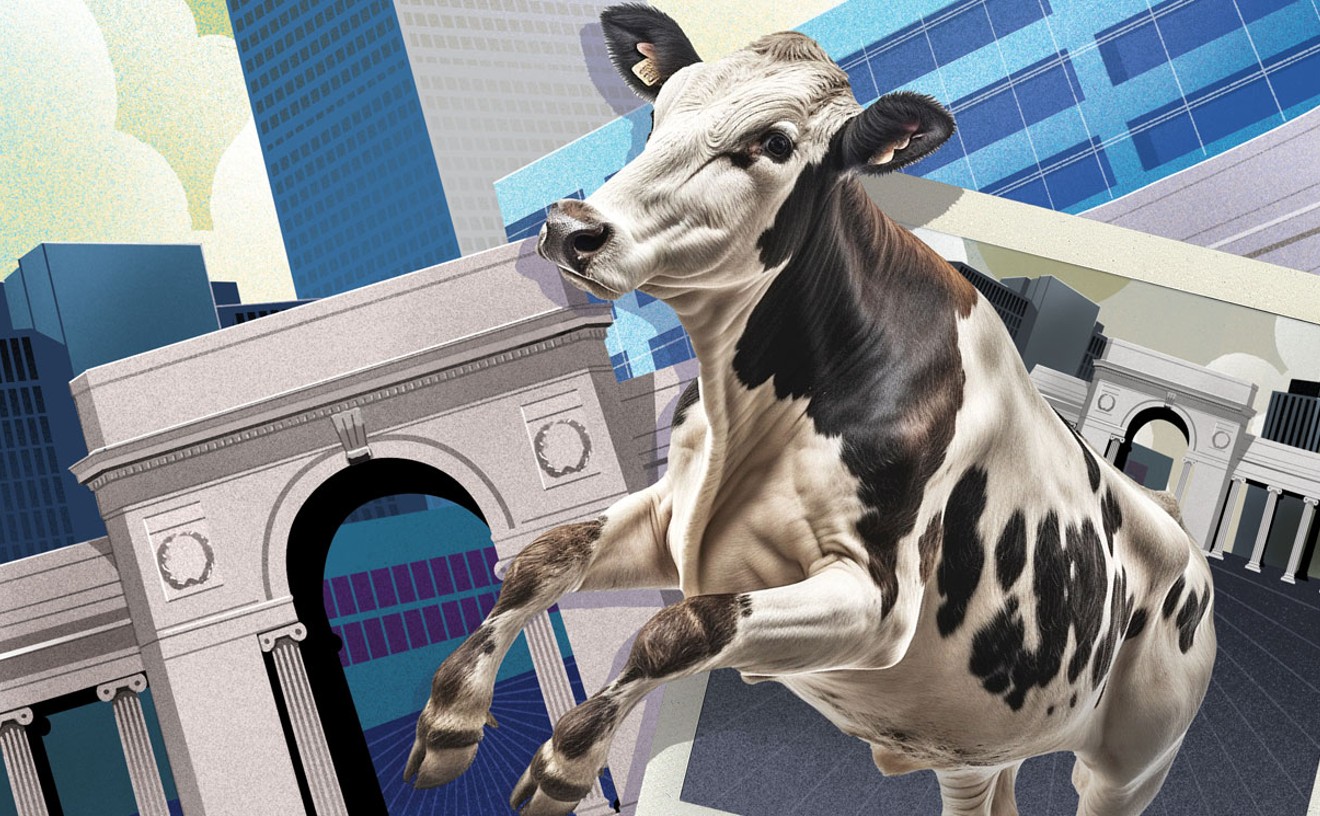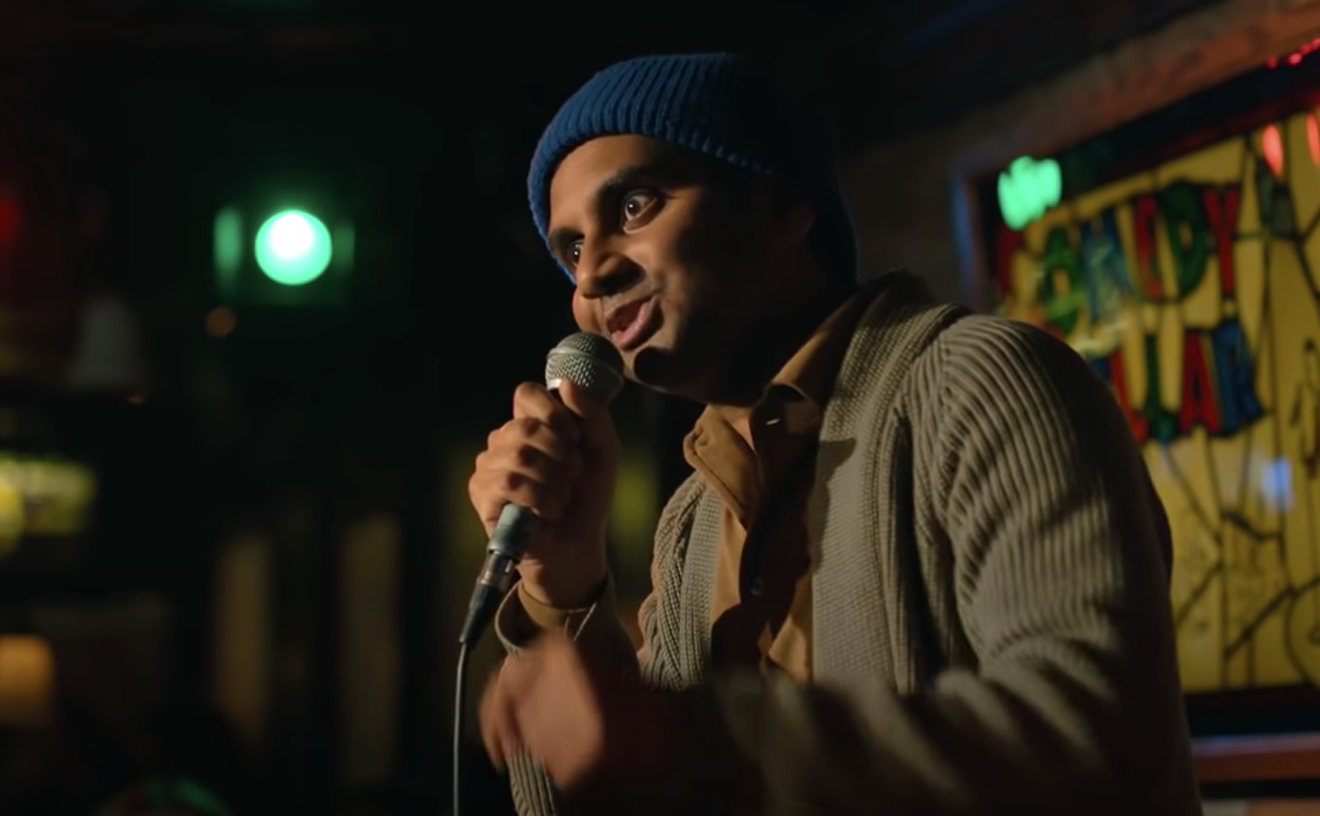If that strikes you as deeply fucked up, you'll watch Eric Steel's morbid, fascinating documentary The Bridge in a state of perpetual queasiness -- starting with the opening shots of rubberneckers gawking off the bridge into space. One by one, sightseers belly up to the rail; occasionally, someone will get up the nerve to crane his neck over the side. By the time a track-suited man hoists himself up the barrier, we've gotten used to seeing tourists tempted by the view -- until he clears the rail and hurls himself into the void.
Suicide porn or snuff movie? The ghoulishness of Steel's project -- he trained cameras on the Golden Gate Bridge throughout 2004, watching for jumpers -- is an ethicist's minefield. (In the press notes, Steel says he and his crew vowed to intervene first and shoot second; he doesn't mention, as Variety's Dennis Harvey did, that he initially misled officials about the film's red-flag topic when he needed permits, or that he didn't tell his interview subjects until later that he had filmed their loved ones' deaths.) But the pervasive, plaintive chill of his movie, essentially a memorial to those who succumbed to whatever inner voice urged them to jump, transcends its Faces of Death premise and lugubrious what-happened? tone.
The Bridge uses as its starting point a 2003 New Yorker piece by Tad Friend, who explored the suicide phenomenon surrounding the Golden Gate. "Phenomenon" is the word: Friend reported that the suicide rate prompted dead pools and radio contests back in the 1990s -- one zoo crew offered a case of Snapple to the family of lucky number 1,000 -- and officials begged the press to stop reporting the tally. Twenty-four people jumped from the bridge in 2004, the period Steel covers -- about one every two weeks.
In most cases, Steel has the last pathetic snippet of the jumper's life on tape: a tiny human blur plummeting out of the frame, followed by an off-camera splash and...nothing. In their wake, the movie dutifully visits survivor after survivor. A woman worries she doomed her best friend by loaning him prescription anti-depressants he couldn't buy; a father describes having to face his 22-year-old son's death wish with weary resignation.
But the banal remembered particulars are less upsetting -- and less revealing, in a suggestive way -- than the affectless glimpses of the soon-to-be-departed through Steel's long-range lenses. At first glance, they're indistinguishable from the rest of the foot traffic, right up to the moment they bypass some circuit-breaker of survival instinct that keeps the rest of us on the other side of the rail. The decision to jump severs some lifeline of empathy to the living: They are unknowable, except to another jumper. Equally disturbing, in this context, are the shots of unidentified walkers who pause to look over the side, then pause just a second longer -- plainly hearing, if only for an instant, the siren song of the undertow.
In one of the film's most telling moments, a photographer takes pictures of a would-be suicide, then wrestles her back to the bridge; it's at the moment he sets down his own camera, settling his ethical quandary, that he shows up on Steel's. (Once again, life imitates Brian De Palma.) The camera makes a poor substitute for human connection. Kevin Hines, one of the few jumpers to survive the pulverizing landing -- water isn't soft when smacked at 75 mph -- recalls standing on the bridge in tears debating whether to kill himself; the clincher was a German tourist who blithely asked him to take her picture. Yet another jumper left photographs of his own view from the bridge, in one last attempt to communicate his life-negating misery; the mundane images show only what he was seeing, not what he saw.
So why the Golden Gate Bridge? Friend's article -- which is infinitely richer in historical and psychological detail, and doesn't come equipped with a sickly score that's like a funeral director's practiced sympathy -- speculates that it's a combination of "fatal grandeur" and its controversial low railing. In the movie, though, the bridge's towers loom over all angles of the city. To a despondent person who already feels like a loser, the aspiration and achievement they represent could become an omnipresent rebuke -- what the friend of one jumper means, perhaps, in describing the bridge's "false romantic promise."
To many, though, that promise isn't false -- even to the jumpers themselves. "That's something else I'm pissed off at him about," a jumper's roommate says. "It's such a great bridge." He laments that he'll never see the Golden Gate Bridge again without thinking of death. That's something he'll have in common with anyone who sees The Bridge.










